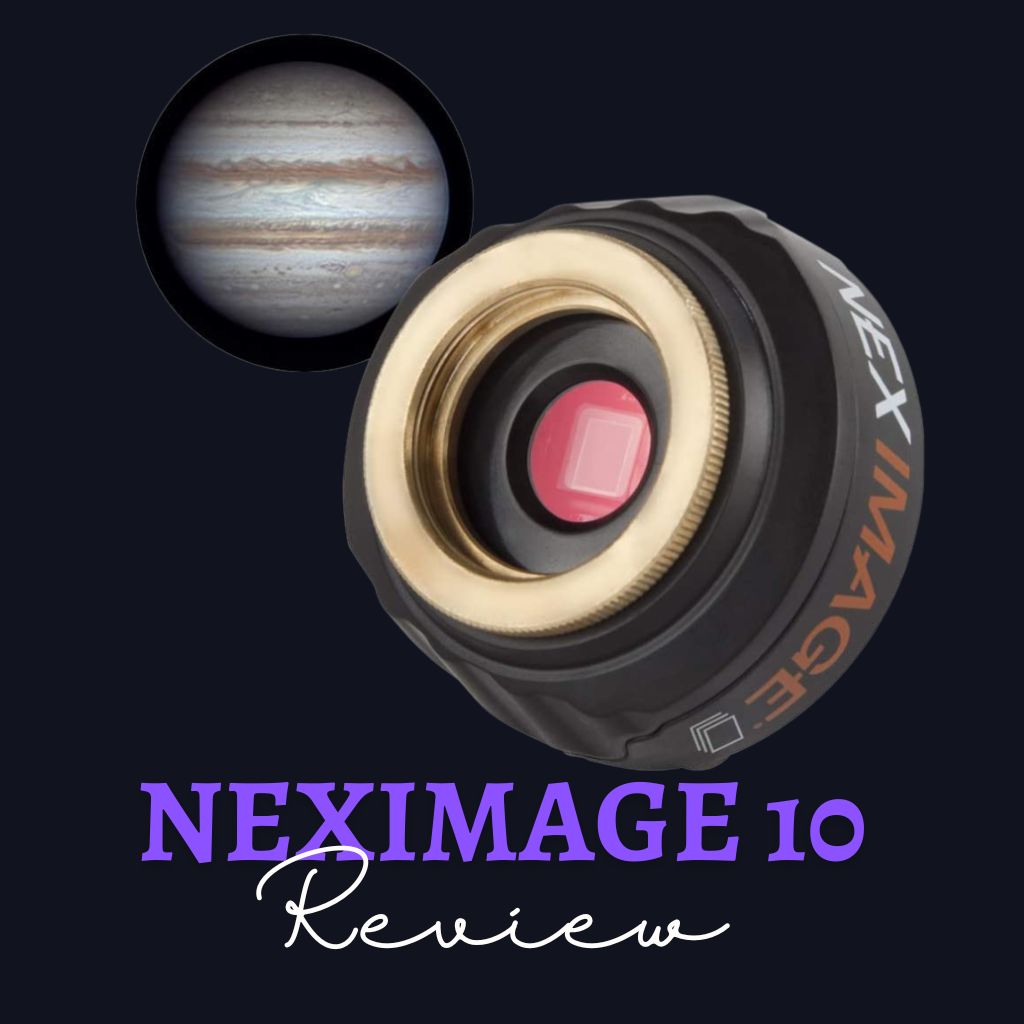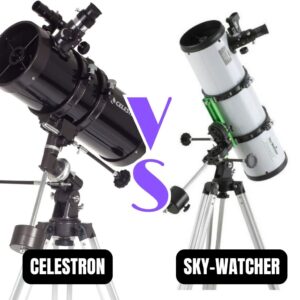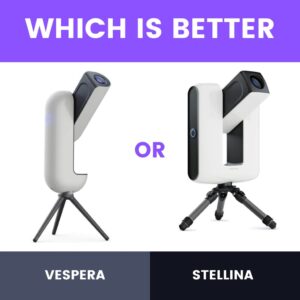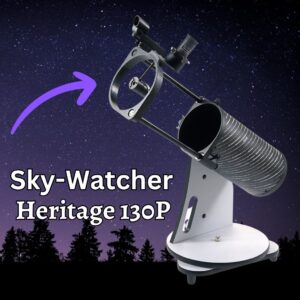This site contains affiliate links to products. I may receive a commission for purchases made through these links.
Celestron NexImage 10 is a 10-megapixel solar system color imager designed to capture high-resolution images and videos. It’s a plug-and-play imager with advanced features that simplify capturing detailed planetary images. Its 1.67-micron square pixel size allows for excellent sensitivity and the ability to capture high-resolution, color solar system images with superb contrast and resolution.
The Celestron NexImage 10 Solar System Camera is affordable and ideal for beginners and experienced astrophotographers alike. It is compatible with telescopes that accept 1.25-inch eyepieces and includes the software to capture stunning solar system images.
This camera is built only for solar system imaging, not deep sky-object astrophotography. You can use it only for the moon, sun, and large or closer planets.
In this article, we’ll cover the features of the Celestron NexImage 10 solar system color imager in detail. We will also review its software’s compatibility with MAC and Windows and look at the best alternative solar system imaging systems.
Specifications of the Celestron NexImage 10 Solar System Camera
- USB 3.0 connection
- Aluminum body
- ADC 12bit
- ON Semi MT9J003 color CMOS 10-megapixel sensor
- Maximum resolution 3856 x 2764 pixels
- Pixel size 1.67-micron square
- 6.4mm x 4.6mm (0.25″ x 0.18″) sensor size
- 0.0001 to 10 seconds of exposure range
- Electronic Rolling Shutter
- -40°F to 104°F (-40°C to 40°C) operating temperature
- 10′ cable length
- IR Cutoff Filter
- 1.25″ barrel and C-thread mounting
Magnification and field of view of NexImage 10 Camera
The field of view and magnification you get from the Celestron NexImage 10 solar system color imager depends on the telescope you are using. With a standard 1.25″ eyepiece, the field of view is approximately 15.7 x 11.8 degrees, and the magnification is about 64x to 128x.
The size of the imaging sensor also determines the magnification and the field of view.
The NexImage 10 solar system color imager has a 1/2.3″ size sensor, each pixel measuring 1.67 microns square. It can capture high-resolution solar system images with excellent contrast and resolution.
The smaller your imaging sensor in a camera, the more magnification you get.
And, of course, this means a smaller field of view. A solar system imager will mainly feature small sensors because you need high magnification for planets and the moon.
You need to calculate the field of view of the Celestron NexImage 10 and your telescope. The free software Stellarium will do it for you after putting all the camera parameters and the telescope.
Let us look at an example where I’ll use a telescope with a focal length of 1000mm.
After you launch Stellarium, go to the upper right corner, where you have four icons. First, click on the Settings icon(first from the right). The setting window will open, and then go to the telescope tab first and put your telescope’s parameters.

Then go to the Sensor tab and do the same for the sensor (check the camera specs).

You can add as many sensors and telescopes as you want here. After closing the window, click the Image Sensor Frame icon (third from the right).
There you can switch between the sensors and telescopes. Find an object you want to observe with the camera—for example, the planet Jupiter.
You can now see the field of view on the screen using the Celestron NexImage 10 camera and telescope with a focal length of 1000mm.

You can also add a Barlow lens in the Lens tab of the settings window to get more magnification. Here is the example with a 2x Barlow lens.

It is the perfect method for any camera and telescope to determine the field of view at full resolution. Now you know what to expect from the setup before you buy anything.
How to use Celestron NexImage 10 Camera
NexImage 10 camera is an easy-to-use plug-and-play device. You must screw the 1.25″ barrel on the camera and mount it in your focuser. Then connect the USB cable to a laptop or computer with USB 3.0.
You may also like: How to Connect Telescope to Computer (Using Free Software)
Can I use the Celestron NexImage 10 with my Mac?
The Celestron NexImage 10 solar system color imager comes with iCap software you can install on your Mac OS computer. The software may be outdated, but you can always download the latest version from Celestron’s website.
You must install the relevant drivers and follow the instructions to get the most out of your solar system color imager. It’s the most critical step of setting up the camera and ensuring you get detailed planetary images.
Can I use the Celestron NexImage 10 with my Windows computer?
Like the Mac version, you can use the Celestron NexImage 10 solar system color imager with your Windows computer. The solar system imager comes pre-loaded with the iCap software compatible with Windows.
You must also install other necessary drivers and follow the instructions carefully to get quality images.
NexImage 10 Camera Software
The camera works with iCap imaging software available in the package as a CD. The software can be outdated, so I recommend downloading or updating the latest version from the Celestron website.
Take the time during the day to learn the basics of the software before image capture. You can quickly adjust the image capture settings at night and yield tremendous planetary detail.
This 10-solar system color imager from Celestron offers excellent image capturing with automatic filters, high-speed data transmission, and more.
The software automatically filters the image before it is saved to the computer, reducing noise and improving image quality.
The iCap software analyzes the image and extracts a color composite automatically. It is one of the best features of this camera that helps you save a lot of time and energy editing the image.
Once the image is processed, save it in TIFF or JPEG format. You can adjust the image capture settings to yield high-resolution video clips with up to 10 frames per second.
This camera is a great tool for any beginner or intermediate astronomer looking to explore the night sky.
“Lucky imaging” with Celestron NexImage 10 Camera
Don’t expect to snap one photo in iCap and immediately get a perfect image of the planet. You need to record a high FPS video and then use software like Registax or Autostakkert to combine and stack the best frames to get a clear image. This method is called “lucky imaging.”
The reason is that the live image you will see while looking with the camera and the telescope is distorted by the atmosphere because of the atmospheric turbulence.
It is like looking through water. And by using only the best frames, you can get a good image of the object.
This method requires patience, but the results are worth it. You don’t need to be a professional astrophotographer or an expert in image processing. All you need to do is look for the best frames and stack them together to get a clear picture of your desired subject.
Here is the video resolution and FPS you can get when using the Celestron NexImage 10 camera:
| VIDEO RESOLUTION | FPS 12bit ADC |
| 3872×2764 | 6.85 |
| 2560×1920 | 14.34 |
| 2048×1536 | 21.74 |
| 1920×1080 | 31.70 |
| 1600×1200 | 34.17 |
| 1280×960 | 50.96 |
| 1280×720 | 65.11 |
| 1024×768 | 64.59 |
| 640×480 | 94.4 |
Is the Celestron NexImage 10 easy to use for a beginner?
Beginners who want to capture high-resolution images of planets and other deep-sky objects will find the Celestron NexImage 10 easy to use. With minimal effort, you can hook it up to a computer, and the included software is easy to operate.
The camera also automatically filters the image before saving it, reducing noise and improving image quality. The iCap software has high-speed data transmission that makes it easy to yield tremendous planetary detail.
If you live in a light-polluted area, the planetary color camera from Celestron will work well, as it does in dark sky sites.
That makes it an excellent tool for beginners or intermediate planetary imagers who want to explore the night sky and capture images in amazing clarity.
Is the Celestron NexImage 10 a good investment?
The planetary camera can be a great investment in terms of time saved and planetary images captured. With the help of this solar system imager, you can capture detailed planetary images with minimal effort.
You will be surprised by the sharp images this camera can produce when combined with a good telescope. It’s a great choice for anyone who wants to capture planetary detail without the hassle of manually adjusting settings.
Its compatibility goes beyond Celestar telescopes, making it a good investment for anyone with a telescope using a 1.25” eyepiece holder.
Overall, the planetary color camera from Celestron is an excellent choice for anyone exploring the night sky and capturing planetary images in great detail.
If you are a professional astrophotographer or beginner with a higher budget, I recommend buying the ZWO ASI183MC Pro 20.18 MP CMOS Color Astronomy Camera. It’s a 20MP planetary color camera compatible with 1.25 and 2-inch telescope focuses.
Celestron NexImage 10 Camera alternative
If your budget allows it, I recommend ZWO ASI 178MC as an entry point to a professional imaging camera. It’s just a few dollars more expensive than Celestron NexImage 10 planetary camera. The main difference is that you use the ZWO ASI 178MC with the telescope focuser, while NexImage 10 uses a 1.25” eyepiece holder.
The ZWO ASI 178MC has a fast USB 3.0 transfer of up to 60 frames per second at maximum resolution. The planetary camera has almost the same sensor size and bigger pixels for more light gathering.
This model is best used with reflector and refractor telescopes mounted on motorized equatorial mounts. For best results, you may require accessories like a Barlow lens, focal reducer, and an auto guider.
It is a great planetary camera with ADC 14bit making it capable of higher FPS, which is critical for planetary imaging.
| VIDEO RESOLUTION | FPS 14bit ADC |
| 3096×2080 | 30 |
| 2560×2048 | 31 |
| 2048×1080 | 58 |
| 1280×960 | 65 |
| 800×600 | 102.3 |
| 640×480 | 126.5 |
| 320×240 | 239.8 |
Takeaway: Celestron NexImage 10 is a good investment for astrophotography lovers
The Celestron NexImage 10 planetary camera is an easy-to-use and great-value planetary camera that captures high-resolution images. It is a good choice for beginner planetary imagers and can be used with almost any telescope using a 1.25″ eyepiece holder.
With the included software, you can quickly and accurately capture planetary images with minimal effort. This great solar system imager can take your solar system imaging to the next level.
Don’t forget to subscribe to our newsletter where you’ll find the latest cosmic discoveries, expert stargazing tips, and exclusive subscriber deals. Embark on your cosmic journey if you haven’t already!
Read also:







